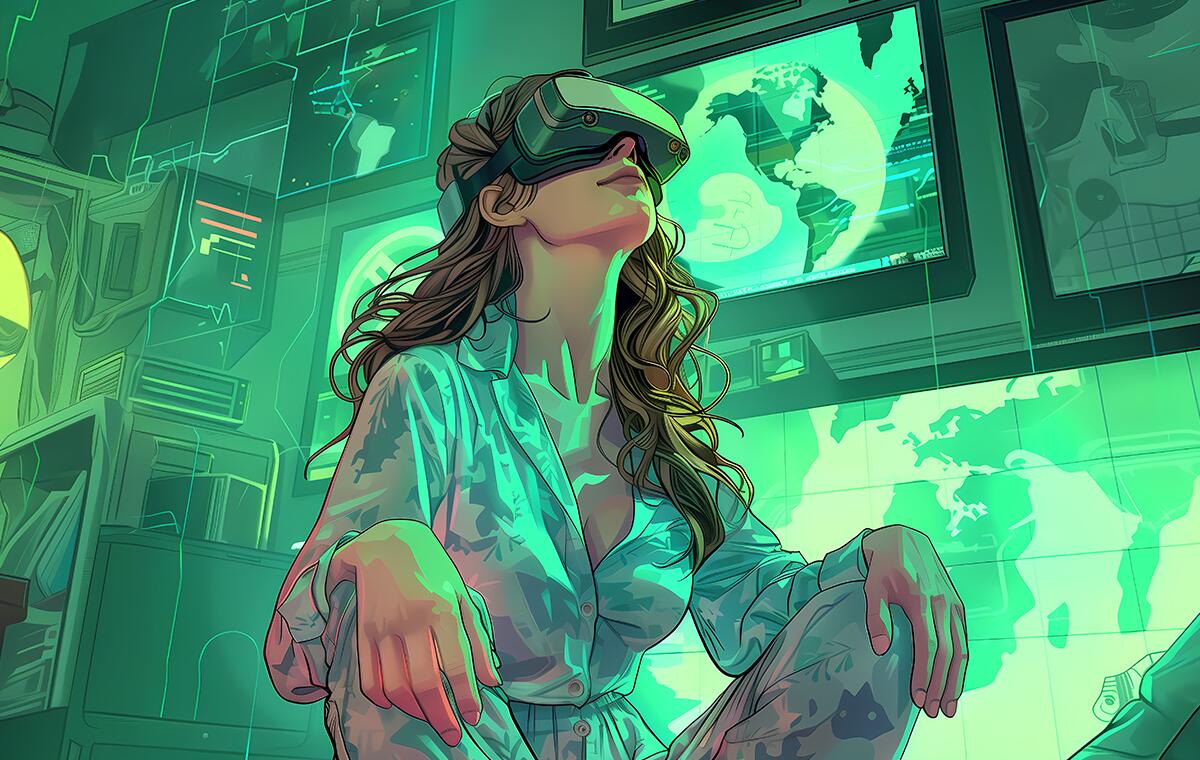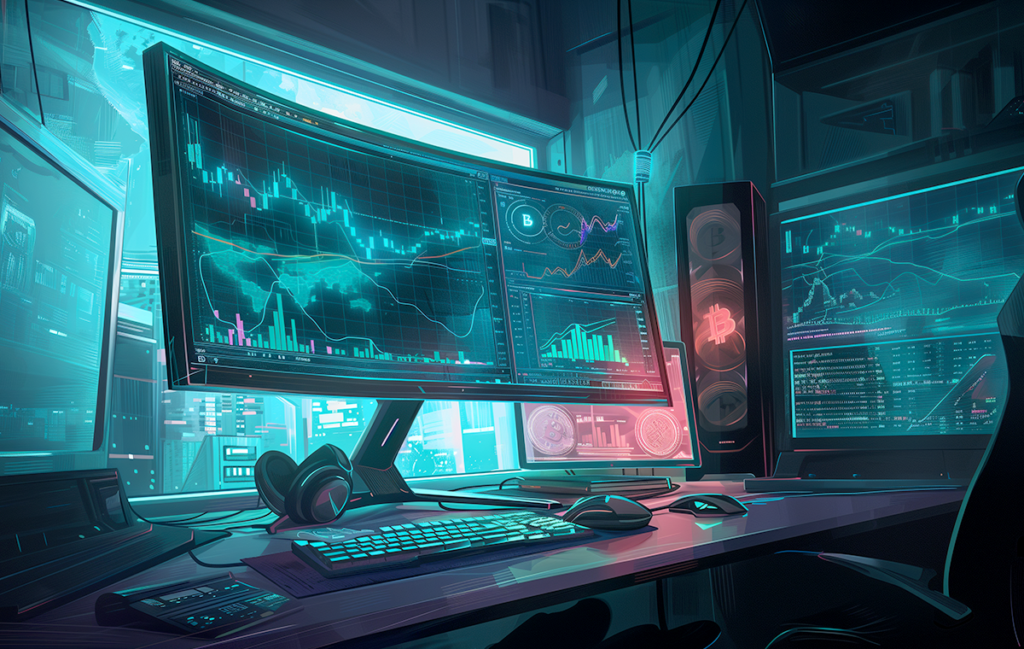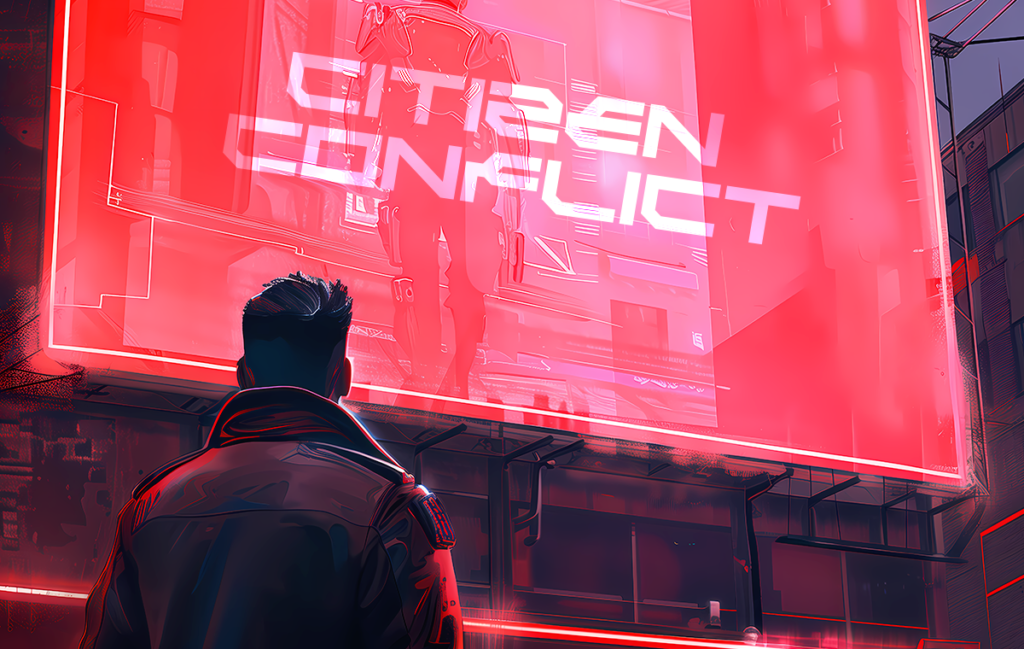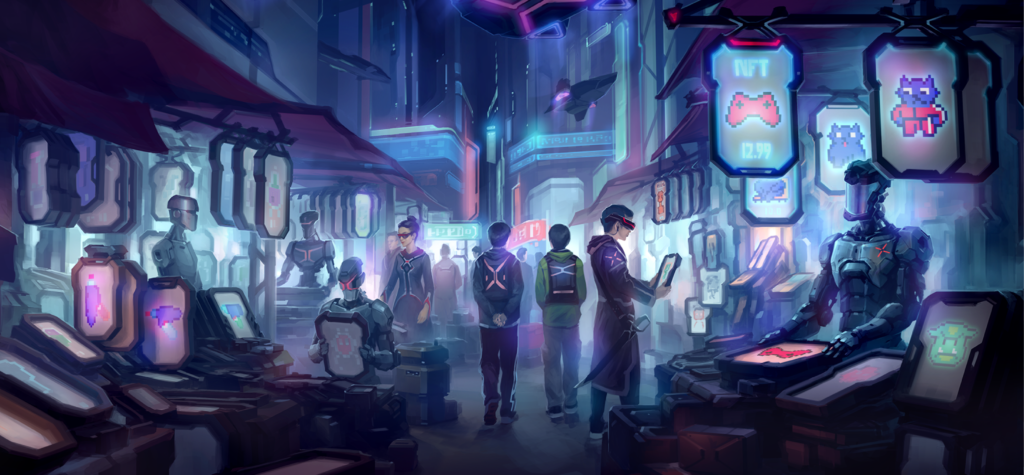
Player-driven economy: how Web3 games revolutionize gaming economies
Gaming industry has evolved into a gargantuan walled-garden of Babylonian measures. Within its confines, players are no longer owners but licensees, limited by strict Terms of Service and lack of liberties. Players got evicted from true ownership, having been left as tenants of big gaming companies and game distribution platforms. Thankfully, Web3 decentralization opens new, more equitable ways to distribute gaming content and secure in-game economy that does not intrinsically exploit players. Welcome to the player-driven economy.
Evolution of economy models in gaming
The gaming industry has traversed a remarkable journey from its modest origins over fifty years ago to the ambitious promises of a futuristic metaverse. Along this path, it has witnessed numerous transformations and pivotal moments. Dating back to the early 1970s, when arcade games began gaining significant commercial traction, the focus on economic models became paramount for developers. Initially, games followed a rudimentary pay-to-play system, reminiscent of selecting tunes on a jukebox.
As the 1990s unfolded, CD-based games took precedence. However, with the evolution of more intricate and costly games, microtransactions emerged as a dominant revenue driver. Yet still, the development costs kept on soaring up. One time purchase per game title simply couldn’t support game studios any longer.
The initial approach to extending the market life cycle of a game emerged through DLC (Downloadable Content), typically comprising extra skins, diverse digital items, gear, or subsequent game chapters, particularly in many RPGs. These downloadable packages have gained immense popularity among gamers and acted as a precursor to the integration of microtransactions within game economies.
First breaking the mold, Microsoft pioneered the concept of microtransactions in 2005, sparking widespread adoption in gaming. Bethesda’s Elder Scrolls IV popularized this with a $2.50 cosmetic horse armor in 2006. Electronic Arts (EA) further championed this approach, notably in FIFA’s Ultimate Team mode, contributing to a massive 29% of EA’s revenue in 2020. Despite only 5-20% of players participating, microtransaction shoppers (40%) make weekly transactions, constituting 60% of game sales. These figures demonstrate their indispensability for developers’ sustainability. Microtransactions are firmly entrenched in the gaming industry’s future.
Despite their prevalence, each of these monetization models has revealed its own set of shortcomings.

Challenges of developer-centric economy
In a developer-centric in-game economy, desired items are solely obtained through direct purchase or earning from the developer. Secondary trading is eliminated, granting the developer complete revenue control. For instance, if Player A buys a $15 skin and Player B buys a similar skin for the same price, the developer earns $30 total.
The game’s appeal relies on a carefully designed reward system, pivotal in engaging players. Developers fine-tune this progression using data-driven methods. Absolute control over item distribution allows developers to optimize the reward curve, pricing, and monetization, aiming to maximize player long-term engagement and spending.
However, developer-centric economy models suffer from several shortcomings which put them in disadvantage over open market economies, where players are encouraged to drive the gaming assets market and place their offers.
Open market, although slightly diminishing developers’ control over the game economy dynamics, significantly increases player engagement and community building. Because the open market factor gives gaming IPs another layer which stems from social immersion, interactions and trading on top of mere gameplay. As a result, by allowing the community to enter the walled-garden of in-game economies, developers remarkably extend average player LTV (lifetime value).
What’s player-driven economy
Contrary to developer-centric economy models, especially among MMORPG titles, a new approach has emerged. A player-driven economy (PDE) within a game fundamentally shifts the power dynamics of value determination from developers to the players themselves. This system operates on the principles of player interactions, trading, crafting, and market influences to determine the worth of in-game items, resources, and assets.
One of the defining features of a PDE is its inherent dynamism. Rather than fixed prices or values set by game developers, the economy fluctuates based on supply and demand, player behaviors, and emergent player-driven markets. This creates an engaging environment where players actively participate in shaping the economic landscape of the game world.
Implementing a successful PDE requires careful balancing and maintenance by game developers. Balancing supply and demand, preventing exploitation, regulating markets to avoid inflation or crashes, and ensuring fairness among players are critical aspects. Game developers often need to actively monitor and occasionally intervene in the economy to maintain its health and prevent undesirable outcomes.
Furthermore, the success of a PDE heavily relies on the players’ understanding of its mechanisms. Developers should provide adequate information and tools for players to navigate and thrive within this dynamic economic system.
Advantages of player-driven economy

Player-driven economies in gaming offer a multitude of advantages, notably enhancing community engagement by fostering collaboration and interaction within the game. These economies accommodate diverse player motivations, allowing individuals to pursue paths like wealth creation, asset speculation, or trading, catering to various playstyles and preferences. Moreover, they add depth to gameplay through resource gathering and item production, promoting skill development and strategic thinking.
Sustaining long-term player engagement is another key benefit, as these economies provide ongoing goals tied to economic success, incentivizing continued player involvement. Additionally, these systems mirror real-life economic principles, allowing players to experience wealth creation and trading in a virtual setting, offering a learning platform with lower stakes.
Furthermore, player-driven economies nurture social dynamics by empowering player communities to influence the in-game economy, fostering a sense of ownership and camaraderie. Overall, they create dynamic market environments that encourage strategic decision-making and adaptation to market fluctuations, contributing to an immersive gaming experience where players actively shape the virtual economic ecosystem.
The benefits of a PDE are multifaceted and contribute significantly to the overall gaming experience:
- Engaging Gameplay and Community Involvement: PDEs foster active participation and investment from players. The interactive nature of buying, selling, and trading items creates a more immersive experience. Moreover, it encourages social interactions, forming player communities, and engaging in player-driven events, competitions, and collaborations related to the economy.
- Enhanced Replayability and Longevity: The evolving nature of a player-driven economy introduces a constant flow of new items, resources, and gameplay dynamics. This continual evolution provides players with reasons to return to the game, even after completing the primary objectives. Players explore new strategies, discover novel combinations, and adapt to changing market conditions, thereby extending the game’s longevity.
- Alternative Monetization and Reduced Reliance on Microtransactions: A well-designed PDE offers avenues for players to acquire items and resources through in-game activities like crafting, gathering, and trading rather than solely relying on microtransactions. This alternative path for acquiring assets mitigates the pressure on players to spend real money, making the game more accessible and reducing concerns over pay-to-win scenarios.
Player-driven economy challenges
Implementing a player-driven economy (PDE) within a game environment can yield numerous benefits but also introduces several challenges that developers must navigate to ensure a healthy and enjoyable gaming experience.
- Economic Balancing: One of the primary challenges lies in maintaining a stable economy. Preventing inflation or deflation requires careful monitoring of supply and demand dynamics, regulating item rarity, and adjusting drop rates or crafting requirements. Without proper balance, the economy can spiral into chaos, devaluing items or rendering certain gameplay aspects unattainable for most players.
- Player Behavior and Ethics: The autonomy granted to players in a PDE can sometimes lead to exploitative practices, cheating, or fraud. Developers must implement robust systems to detect and deter unethical behaviors. However, policing player actions without impeding the natural flow of the economy can be a delicate balance.
- Developer Intervention and Transparency: While developers should maintain a level of involvement in the economy to ensure its health, excessive interference can erode player trust. Maintaining transparency about interventions, updates, and adjustments made to the economy becomes crucial. Players need assurance that the developers are not manipulating the market for personal gain or to disadvantage the player base.
- Market Volatility: External factors such as updates, new content releases, or unforeseen player behaviors can cause sudden fluctuations in the market. This volatility might disrupt the established balance and cause unintended consequences, requiring quick and sometimes complex solutions to rectify.
- Education and Accessibility: Understanding the workings of a player-driven economy can be daunting for some players. Educating the player base about market mechanics, trading strategies, and item valuation is essential to ensure equal opportunities and prevent information asymmetry from disadvantaged certain players.
Developers need to continuously address these challenges to maintain a thriving PDE. Utilizing analytics, community feedback, and a proactive approach to monitoring and adjusting the economy can help navigate these hurdles effectively.
How Web3 games put in-game economies in hands of players

Player-driven economies in Web3 games leverage blockchain technology to empower players with true ownership of in-game assets, fostering a more robust and immersive gaming experience. This innovation has transformed traditional gaming economies by introducing decentralized systems that offer numerous benefits
In mainstream Web2 games, players don’t own their games nor assets they earn in-game. What you own is a mere license that allows you to use the games exclusively within its Terms of Service. Does it feature a marketplace that endorses player-driven open market economy? A welcome step in the right direction yet still, all the rules are dictated by the developer – players are just humble tennants on the landlord’s premises.
In Web3, what you own are non-fungible tokens (NFTs), which are issued by the developer, but players own them, having possibilities to do with them as they please, beyond the confines of the developer-governed environment. NFT owners enjoy liberties of freely trading them, setting their price, renting them or even monetizing them on secondary marketplaces, altogether creating a vibrant and dynamic economic system powered by players.
Conclusion
The shift towards player-driven economies in Web3 games marks a transformative leap in the gaming industry. The traditional developer-centric models, characterized by rigid control and limited player ownership, are giving way to decentralized, blockchain-powered ecosystems that empower players with true ownership of in-game assets.
The evolution of gaming economies, from the early pay-to-play systems to the dominance of microtransactions, has had its share of challenges. However, the emergence of player-driven economies introduces a dynamic and engaging paradigm where players actively shape the economic landscape through interactions, trading, and market influences.

